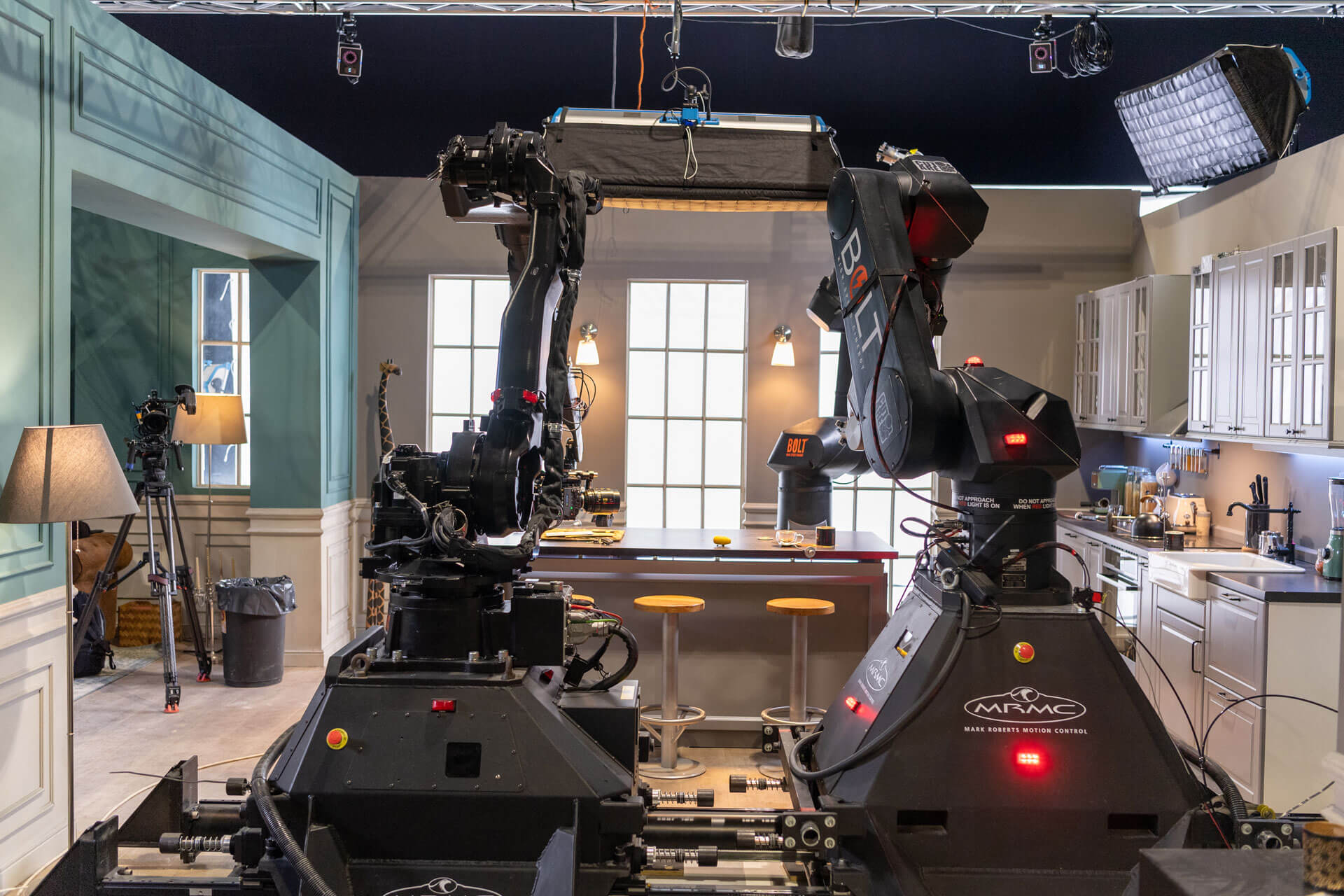The Invisible Man Made by Robots
CASE STUDY
Pushing the boundaries of creative filmmaking, 6 Degrees Romania and MRMC created a new short film using a combination of advanced motion techniques, 3 Bolts, timelapse and performance capture to bring the classic story to life.
PROJECT OVERVIEW
The Invisible Man, titled “TIM” was shot in Romania and captured by 6 Degrees — a hub of talented creatives who specialise in filmmaking and bringing complex ideas to the screen. The primary objective of this project was to push the boundaries of traditional filmmaking techniques. The team aimed to not only use robots to film it but also utilize them as model movers, mimicking human movements and ultimately ‘becoming’ the invisible man protagonist. The result is a continuous shot taking the viewer on a journey of clues, culminating in a ‘loop’ that leaves the spectator asking questions, and ultimately, rewatching it to answer them.
“In essence, our end goal was to showcase that if it can be imagined, it can be accomplished through the utilization of state-of-the-art technologies.”
6 Degrees
THE CHALLENGE
The process of recreating The Invisible Man involved numerous challenges, necessitating the implementation of various motion control techniques. These included multipass shooting, robotic movements that looked human, seamless time dilation and constriction during camera passes, slow and high-speed motion, time-lapse sequences, pixel-perfect synchronisation between three Bolt Cinebot systems, utilisation of numerous custom-built rigs, and the use of cutting-edge performance capture systems on set.

The Solution
Motion control was indispensable for accurately replicating and emulating the movements of the invisible man. To achieve this, a custom set was constructed, accommodating 3 Bolt systems to meticulously capture all the necessary data for post-production. By utilising Flair and the MRMC Tracker App, the robots would recreate human movements, enabling them to simulate actions like filling a kettle and making a cup of coffee.
Accurate timing, triggering, and blocking was crucial for effectively layering all the passes together. The camera movements were adjusted to account for timing variations, allowing for the flexible adjustment of the speed of the plates and passes as required. As a result of these independent passes, it was possible to capture a combination of frame rates, seamlessly transitioning from real-time footage at 25fps to a timelapse effect captured at 1fps. This combination of slow natural movement, high-speed, time-lapse, and slow motion during a continuous shot is only possible with motion control.
Creating the Invisible Man
In collaboration with CGI and animation studio FrameBreed and Digital Stage, employing their cutting-edge technologies, Vicon, a comprehensive performance capture system was implemented on set. This system, powered by a network of 12 cameras, allowed the crew to record and translate real-world movements into the digital environment.
In order to realistically depict the Invisible Man’s attire in full CGI, an actor from Digital Stage was used to perform the actions on set. These live performances were used to generate accurate physics simulations of the clothing, capturing the unique way they moved and interacted based on the actor’s actual movements.
Bolt X and Flair Precision
By leveraging the precision of the Bolt X system, the camera move export capabilities of the Flair software, and the accuracy of the Vicon performance capture system, the team were able to seamlessly integrate a full CGI character into a real-world environment. This was achieved by shooting one take with the actor and one clean plate, allowing the CGI character to be perfectly aligned with the live-action footage during post-production.
This process created a convincing illusion of the Invisible Man, enabling viewers to look inside his clothes and perceive the character as being genuinely there, rather than just a product of cheap tricks or visual sleight of hand.
Flair’s ability to export the camera move for CGI also facilitated the incorporation of intricate 3D details within the one-shot film, defying physics, and smoothly transitioning into a complete CGI and performance capture scene in an apartment building hallway. This seamless integration ensured perfect matching in post-production and eliminated the need for separate 3D tracking of the scene.
WATCH THE VIDEOS
Film
Teaser BTS
Behind The Scenes
CREDITS
Mark Robert’s Motion Control
6 Degrees Romania
–
Cutare Film – @Cutarefilm
Cinema Lights – @Cinema_lighs_grip
Creative Gang Studio
Framebreed Studio – @framebreedstudio
Digital Stage
Kodiak Alpha – @Oanamariaursachi
Sky Studio 21
Visual Effects Studio
Dropia VFX
–
Concept:
Radu Stefan Fulga @Raduunkle
Damian Groves
Director: Damian Groves – @Antondamiangroves
Cinematographer | MoCo Supervisor & Operator | VFX Supervisor | VFX Artist | Grading:
Radu Stefan Fulga
Additional MoCo Operator:
Cosmin Fericean
Art Director:
Tibi Hristu
SFX | Visual Engineer:
Dan Sibisan @Dansibisan
